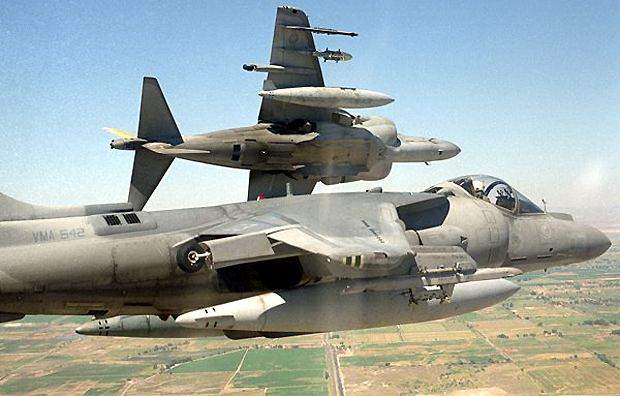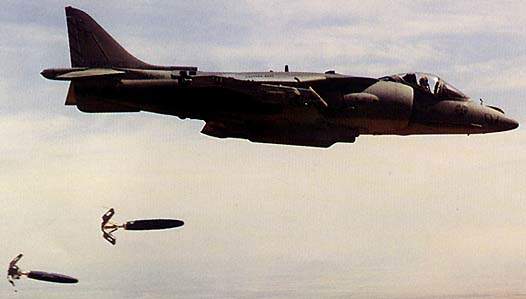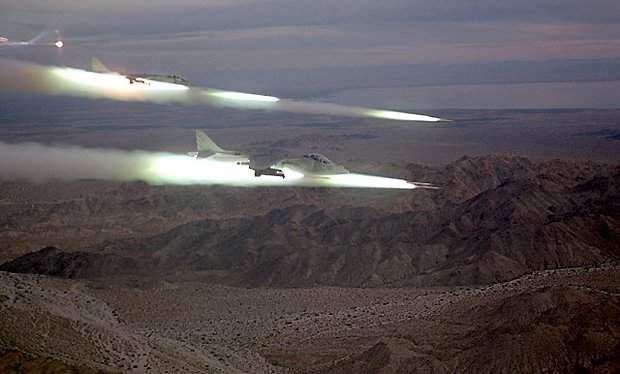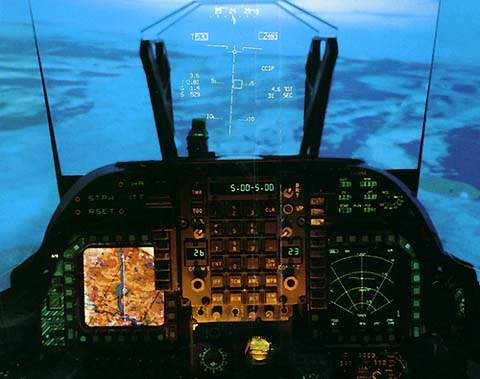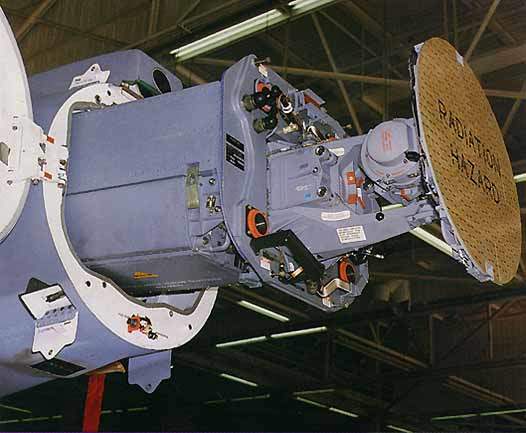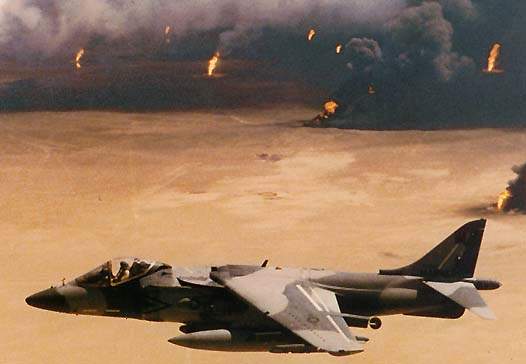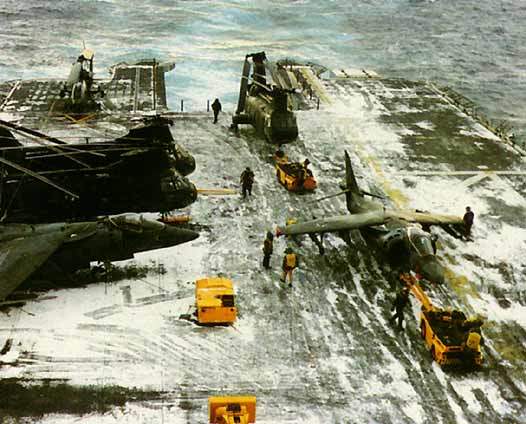The Harrier II Plus (AV-8B), manufactured by BAE SYSTEMS and Boeing, is a VSTOL fighter and attack aircraft operational with the US Marine Corps (USMC), the Spanish Navy and the Italian Navy. The Harrier II Plus extends the capabilities of the Harrier with the introduction of a multi-mode radar and beyond-visual-range missile capability.
The USMC received the first AV-8B in 1993. It has 215 aircraft. The Italian Navy has 18 and the Spanish Navy 17.
AV-8B Harrier GR7 and GR9 upgrades
The UK Royal Air Force has 60 Harrier GR7 aircraft which were upgraded to GR9. The Harrier GR9 entered service in September 2006, with delivery of the first 24 aircraft.
First operational deployment of the GR9 was in January 2007 at Kandahar, Afghanistan, as part of the NATO International Security Force (ISAF).
Since 1969, 824 Harrier variants have been delivered. Manufacture of new Harriers concluded in 1997. The last aircraft remanufactured to the Harrier II Plus configuration was delivered in December 2003, marking the end of the Harrier production line.
The AV-8B has been deployed in Operation Desert Storm, Somalia, Bosnia and Operation Iraqi Freedom.
In June 2007, the US Department of Defense awarded a $258.5m performance-based logistics contract to Boeing Company for the AV-8B Harriers operated by USMC, Italy and Spain under the Harrier Integrated Supply Support (HISS) programme. The contract lasts for five years with an option to extend for five more years.
Services offered under the programme include asset repair management, devolution management, reliability and maintainability enhancements, warehousing, technology insertion, transportation and other advanced supply support solutions.
Harrier II Plus cockpit
The cockpit is fully integrated for day and night operability and is equipped with head-up and head-down displays, a digital moving map, an inertial navigation system (INS) and a hands-on throttle and stick system (HOTAS).
Harrier weapons
The Harrier II Plus is capable of deploying a wide range of weapon systems, including the air-to-air AMRAAM and Sparrow missiles, air-to-surface AGM-65 Maverick missiles, anti-ship Harpoon and Sea Eagle missiles, a 25mm cannon, and a range of bombs and rockets.
The AIM-120A Advanced Medium-Range Air-to-Air Missile (AMRAAM) from Raytheon Missile Systems is an all-weather, fire-and-forget, air-to-air missile, equipped with an active radar seeker and a high-explosive warhead. The range is over 50 miles, and the speed of the missile is 1.2km a second.
The Maverick AGM-65 anti-tank missile is installed on the Italian Harrier II Plus. The AIM-7 Sparrow medium-range, air-to-air missile, a predecessor to the Raytheon AIM-120 AMRAAM, is held in the arms inventories of many countries, including the user countries of the Harrier II Plus aircraft. The Harrier II Plus is capable of deploying the Sea Eagle anti-ship missile from MBDA (formerly Matra BAe Dynamics), which is a fire-and-forget, sea-skimming missile also carried on the Sea Harrier, and the air-launch version of Harpoon AGM-84 surface strike missile from Boeing.
USMC Harriers are fitted with the 1,000lb Joint Direct Attack Munition (JDAM).
AV-8B aircraft have been fitted with the Northrop Grumman Litening II targeting and reconnaissance pod. Litening II consists of a CCD TV camera for video reconnaissance and FLIR and laser spot tracker or rangefinder for targeting.
These are to be replaced with the latest generation Litening Advanced Targeting pod.
Sensors on the Harrier II Plus
The Harrier II Plus is equipped with the Raytheon APG-65 digital radar to provide day and night and adverse weather capability. The APG-65 is a jam-resistant, all-weather detection and tracking radar. In the air-to-air role, the radar operates in search, track and combat modes. Long-range interception missions use the radar’s long-range detection capability and, for the close-in air defense role, the radar uses rapid acquisition modes for the aircraft’s 25mm cannon and heat-seeking missiles.
In the air-to-surface role, the APG-65 radar provides high-resolution, long-range surface mapping and detection, and tracking of land-based and sea-based targets. The radar has the capability to locate small, fast patrol boats in high sea states and to detect large naval ships at long range.
Avionics
The avionics suite of the Harrier II Plus is similar to that of the US Marine Corps’ Night Attack AV-8B. It is equipped with a forward-looking infrared (FLIR) sensor, night-vision goggles (NVG) and an NVG-compatible cockpit.
The image from the FLIR is projected on the wide-field-of-view, head-up display or on one of the multipurpose, head-down displays to provide night-time and reduced-visibility capability.
Rolls-Royce Pegasus engine
The Pegasus engine 11-61 (F402-RR-408) from Rolls-Royce provides a high thrust-to-weight ratio and retains its performance in hot and high-altitude conditions.
The significant aerodynamic features of the aircraft are large Leading-Edge Root Extensions (LERX) and under-fuselage Lift-Improvement Devices (LIDs), drooping ailerons (for example, the control surface that forms part of the trailing edge of the wing), and the slotted flaps augmented vectored engine thrust.
Performance of the Harrier II Plus
The Harrier II Plus can climb at a rate of 14,700ft per minute. Its maximum speed is 1,083km per hour. The normal and ferry ranges of the aircraft are 2,574km and 3,300km, respectively.
The aircraft’s combat radius is 556km. It weighs around 6,743kg and its maximum take-off weight is 14,514kg.

